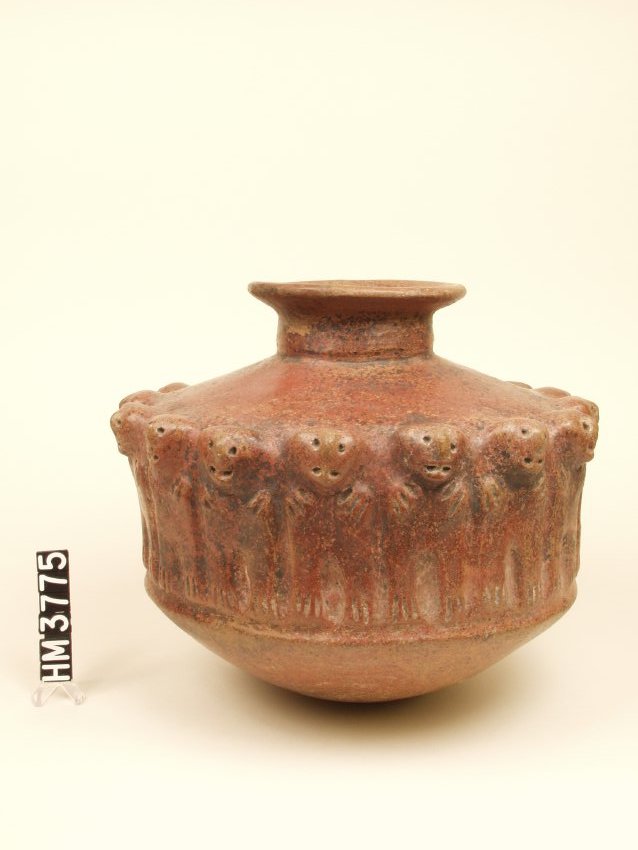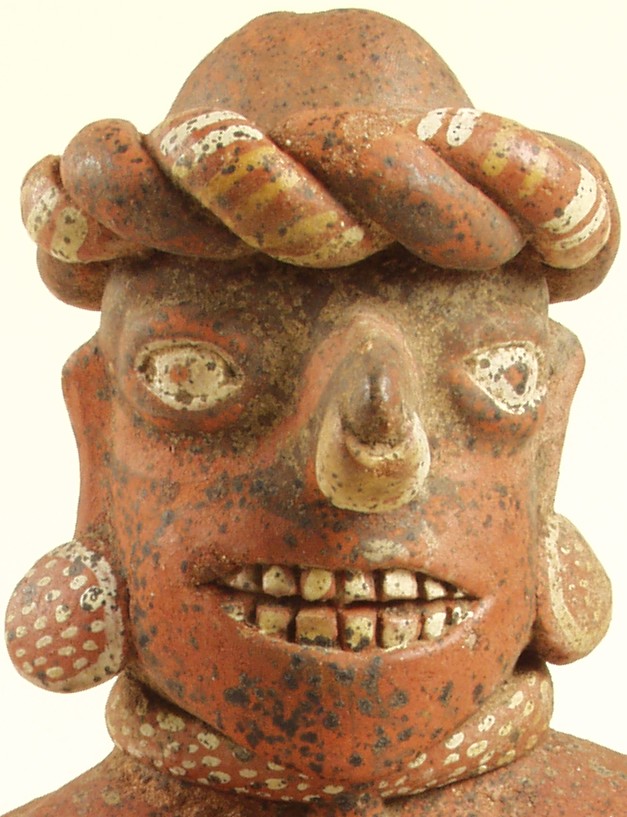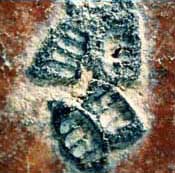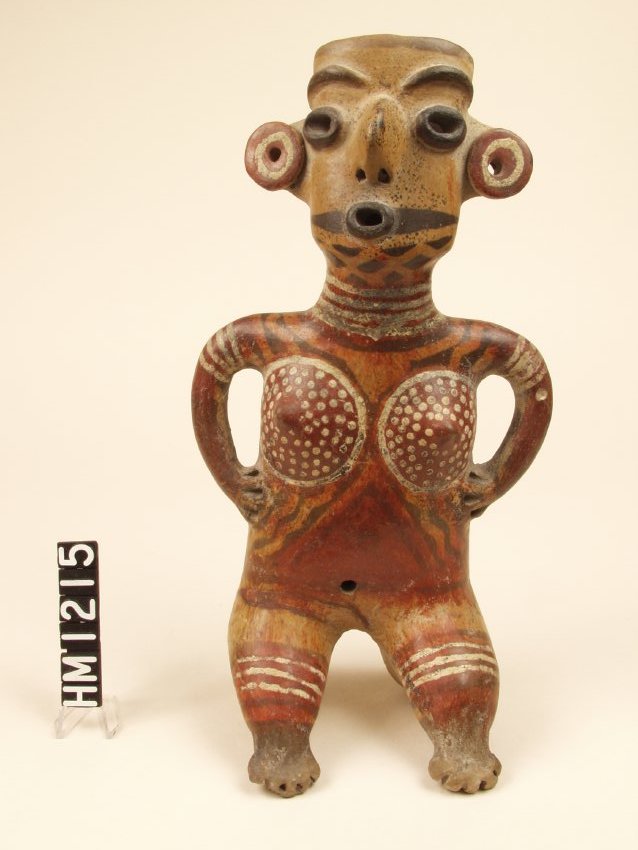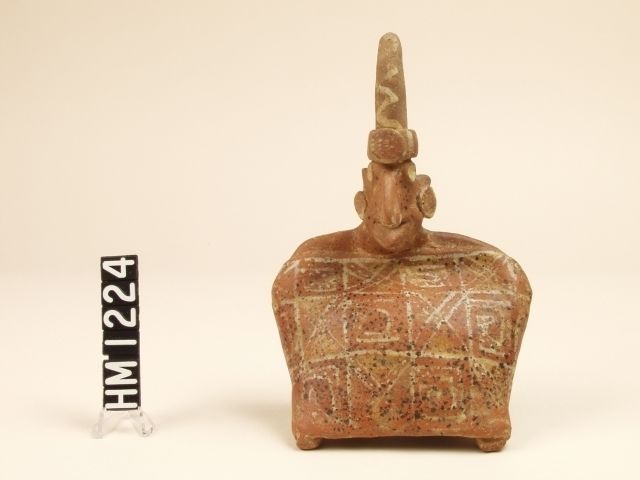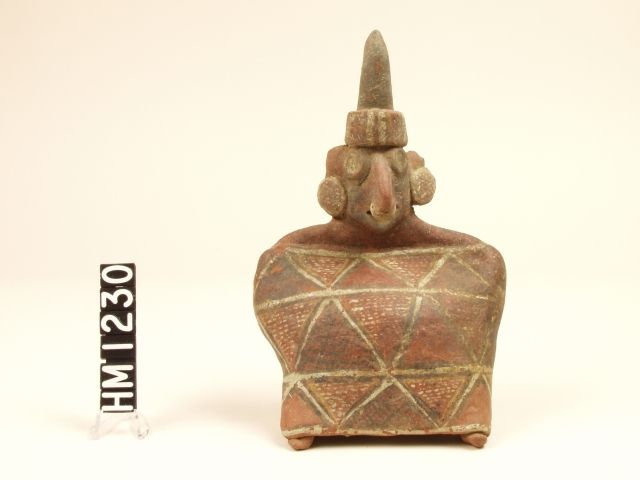Context Found
Mexican potters have been producing forgeries based on ancient figures for almost as long as looters have been illicitly opening shaft-tombs in West Mexico. The presence of large numbers of fakes severely restricts the value of most museum collections for understanding the context of authentic figures. The true range of variation in craftsmanship, materials, artistic conventions, and symbolism can be determined only from real figures. Recent scientific advances make it possible to weed out the fakes and use collections, such as the William P. Palmer III Collection, as resources to support legitimate archaeological excavations in learning more about the past in West Mexico.
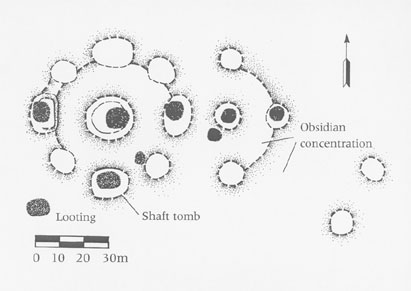
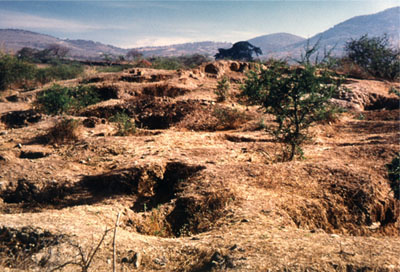
Photograph courtesy of Robert Pickering.
The tomb environment provides clues which can authenticate shaft-tomb figures. Bacteria fixed manganese on the surfaces of ceramics from many West Mexican tombs, leaving black stains. Forgers have found ways to reproduce the stains to make their work look real. Physical anthropologist Robert Pickering applies knowledge from his forensic work to authenticate shaft-tomb figures. Flies whose larvae feed on decomposing flesh infested bodies and meat offerings in tombs. The larvae left the food source and attached themselves to a drier surface to form puparia, from which adult flies eventually hatched. Ceramics provided attractive surfaces for the insects. Figures which remained dry in the tomb setting, and collectors did not later over-clean, retain puparia. Forgeries do not.
Studies of the interiors of ceramic figures can provide important information for authentication. Ancient and modern potters made most hollow figures with holes to release hot gases and keep them from exploding in the kiln. A medical endoscope inserted through such a hole can reveal the presence of puparia inside, as well as hidden evidence of work by a restorer or construction techniques typical of forgeries. Robert Pickering has been using computerized tomography (CT) scans to take x-ray pictures of “slices” of Colima dogs to document their interior construction and look for evidence of restorations. By comparing differences between known forgeries and real figures he hopes to develop another method for authenticating figures.
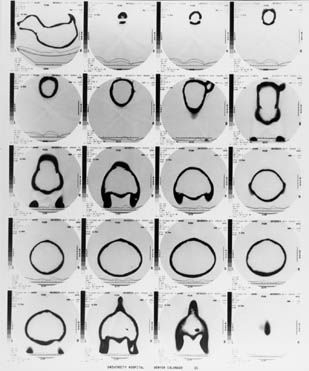
Image courtesy of Robert Pickering.
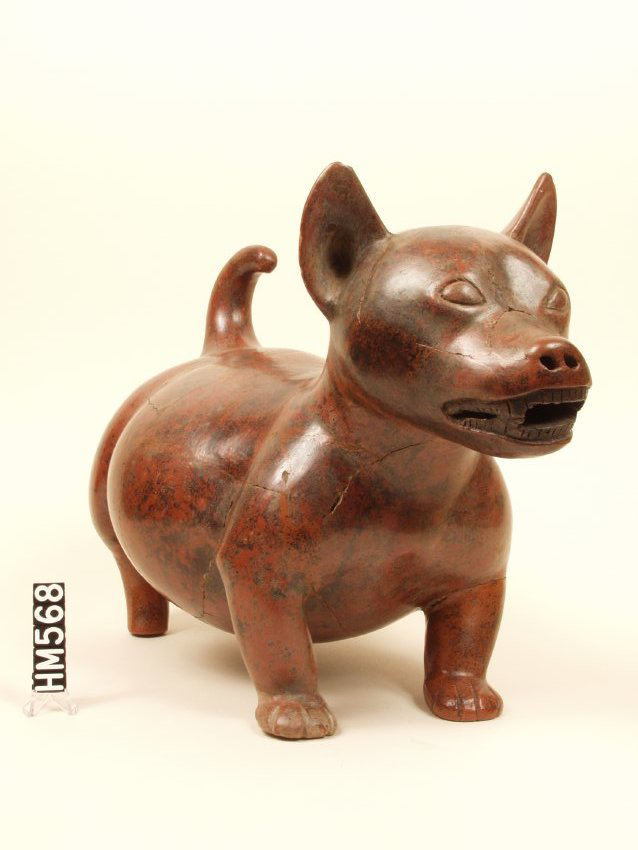
Before recent developments of techniques for authenticating figures, most decisions about what was real were based on the what experts had seen. Since archaeologists had excavated few unlooted tombs, the tendency was to declare that only figures whose styles and craftsmanship were typical of those in private and museum collections were genuine. Now it is clear that the range of variation is greater than had been assumed. Some potters or workshops produced masterpieces, but others made only crude figures. Such differences reflect either the status of the consumer or the skill of the maker. It is becoming possible to tell the difference between the very similar figures produced by lineages of potters or workshops and forgers’ recent copies of ancient pieces.
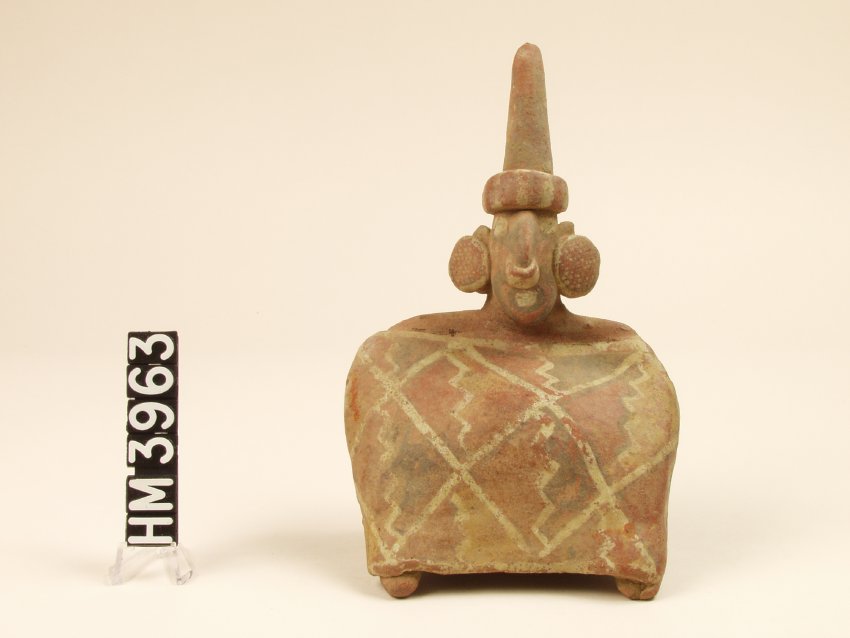
Nayarit Ceramic Figure
200 BC – AD 300
Ixtlán del Río
A figure seated beneath a blanket.
William P Palmer, III Collection
HM3963
New techniques for analysis of figures are under development. Some puparia retain organic material, which radiocarbon (carbon-14) analysis can date directly. Scientists can use scanning electron microscopes to determine what a container held from the deposits on the inside, and where a figure was buried from soil remaining on the outside. Neutron activation can help determine the source of clay used to make a figure, while thermoluminescence can provide an age estimate directly from the figure itself. Pollen analysis can show what plants were blooming when a tomb was open, and therefore the season it was used. In the future, these techniques will allow scientists to find out more about the context of West Mexican tomb figures.
